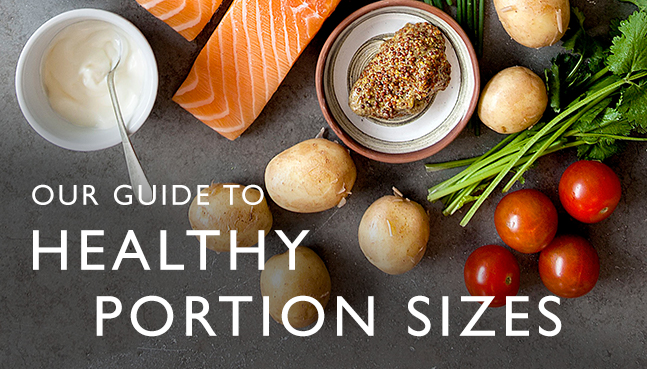Maintaining a healthy weight is not just about what you eat but how much you eat. Many of us find it to hard to judge what a ‘normal’ portion size is, so we’ve put together some easy tips to help you control your portions.
What should I be eating?
To help you get the right balance of foods over the day, use this guide, based on the Public Health England Eatwell Plate. This represents the proportions of foods we should to be aiming to eat each day.


Top tips for a balanced diet
• Eat at least 5 portions of a variety of fruit and vegetables every day
• Base meals on potatoes, bread, rice, pasta and other starchy carbohydrates; choosing wholegrain versions where possible
• Have some dairy or dairy alternatives; choosing lower fat and lower sugar options
• Eat some beans, pulses, fish, eggs, meat and other proteins (including 2 portions of fish every week, one of which should be oily)
• Choose unsaturated oils and spreads and eat in small amounts
• Drink 6 to 8 cups/glasses of fluid a day
If you are consuming foods and drinks high in fat, salt or sugar, have these less often and in small amounts.

Getting your portion sizes right
Now you know what proportions your diet should be made up of overall, it is also important to know what portion sizes you should be eating.

A quick guide to Reference Intakes (RI)
Reference intakes (RI) are a useful guide to help you understand the nutritional requirements of a typical adult on a day to day basis. The exact amount of food you need each day will depend on your age, gender, size and how active you are.
Our packaging makes is easier to find
The percentage reference intake of a product for calories, fat, saturated fat, sugar and salt are shown on the front of pack traffic light panel.








